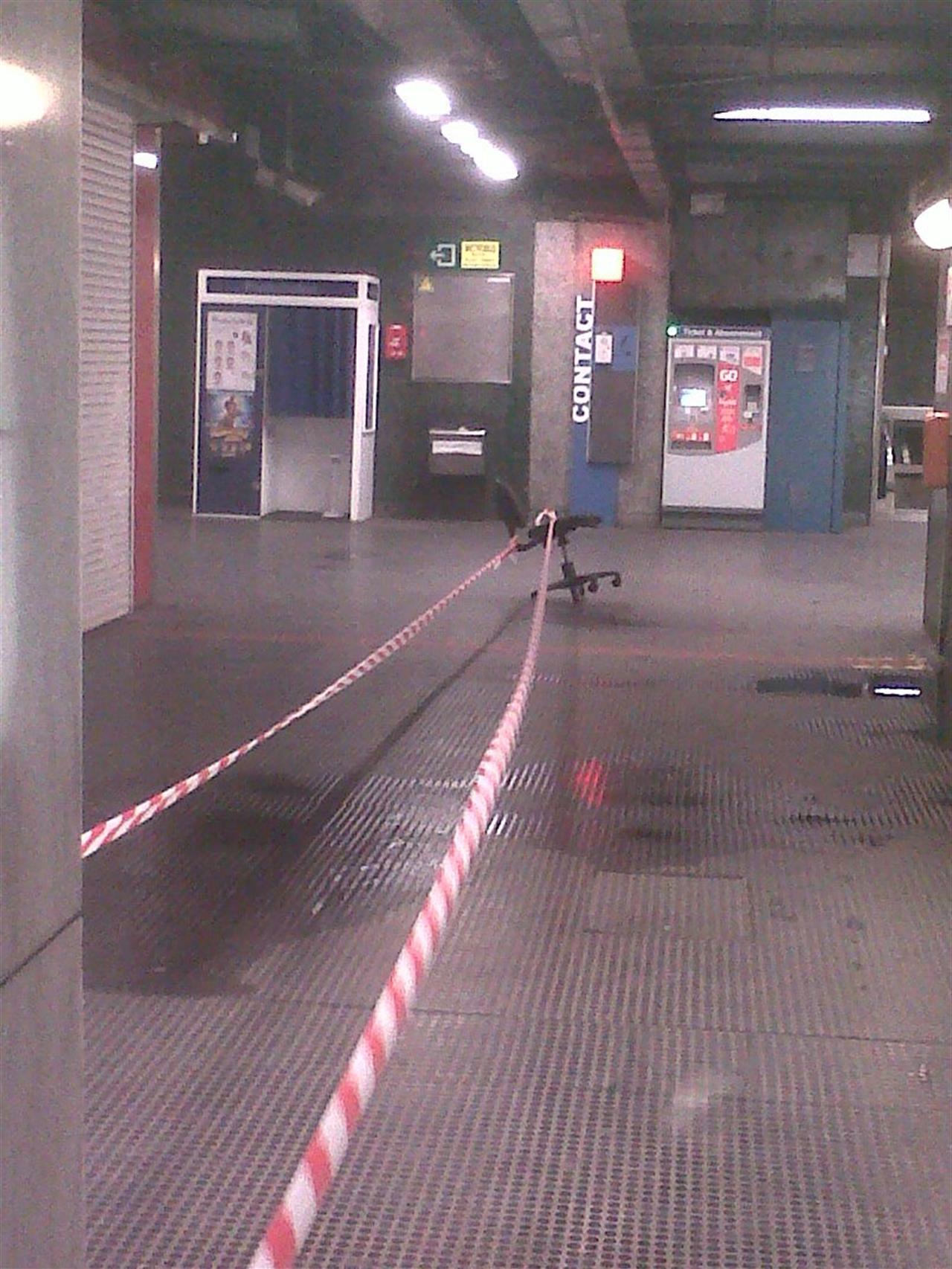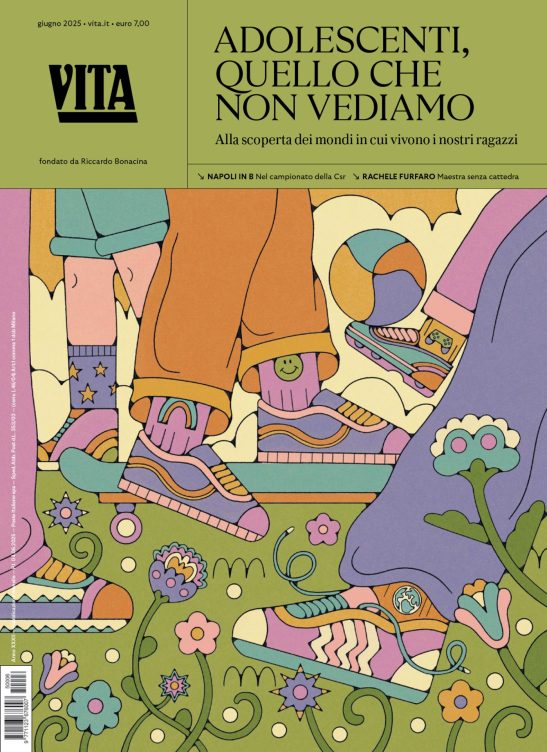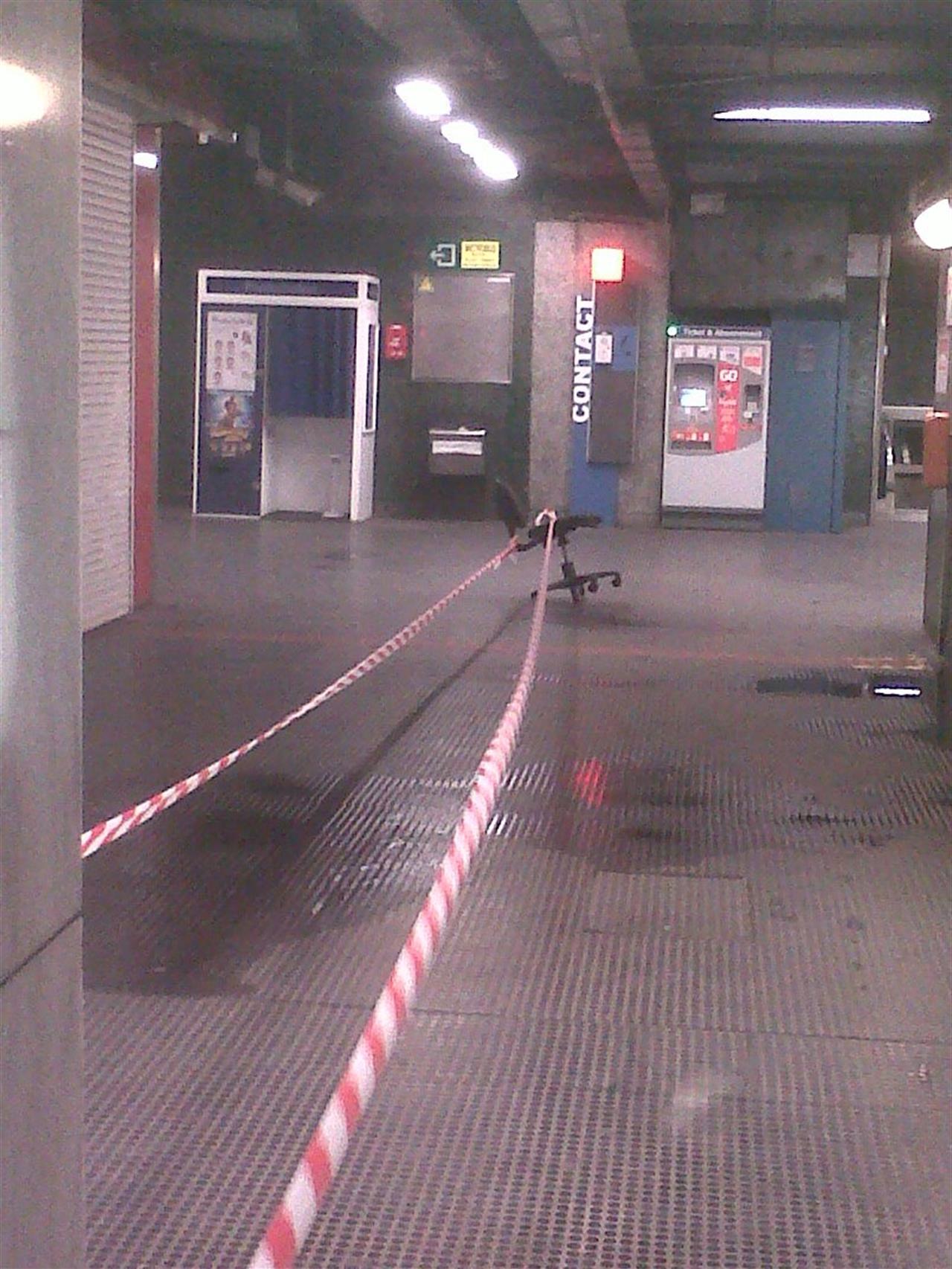
Sometimes you spot an image that exemplifies right away what you are thinking. There are not better words to describe it than what is displayed in front of you. You just need to take a picture and post it.
This is what happened on Friday when I was in Brussels underground. Here is a simple leakage area which has been cordoned off with a cordon tape hung to a tilted chair probably recycled from an office. Such a patchy solution left me bewildered: ‘How is it possible that in the capital of the European Union there isn’t a better solution than this one?’
I could not find a better image to describe my impression of how our European leaders are tackling the crisis. Only sticky-plaster solutions have been devised, and they last less than that hung up cordon tape.
Am I the only one who’s fed up with this endless state of crisis that hinders any long term? I’m 37. What kind of future are they paving for us: just a burgeoning debt made to subsidise the costs of rotting system to be repaid until the end of our days but no social security and pension for us?
I’m not ready to keep quiet in front of this the lack of vision, ambition and leadership that will kill us as the boiling frog.
As you know me I didn’t waste time to implement my resolution and the show started the same afternoon.
I actually was in Brussels for the kick-off meeting of the European social innovation prize competition. Euclid won the tender to manage it together with Nesta and a consortium of PR agencies.
Although you might not be familiar with the concept of the prize challenge it has been used for centuries to stimulate innovative solutions to unsolved problems especially in the public and private sectors. Famous prize challenges are the Longitude Prize that the British government launched in 1714 for the precise determination of the longitude by ships; and the Orteig Prize launched in 1919 for the first aviator who was able to fly non-stop from NY to Paris. More recently Richard Branson launched Virgin Earth Challenge offering $25 million prize for whoever can demonstrate a commercially viable design to remove permanently greenhouse gases out of atmosphere.
Prize challenges are different instruments from grants because they reward results only, stimulate innovative solutions and are accessible to anybody dislodging the gate-keepers. You might remember I was involved in the conception and implementation of the International Social Innovation Competition: Naples 2.0 last year.
Besides paying tribute to the memory of Diogo Vasconcelos who convinced Barroso to include social innovation in the European strategy for innovation and died last summer, the European Union established the social innovation prize competition to try this new instrument – already used in more conventional fields such as security – and foster innovation in society.
Social innovation postulates that innovation is generated by citizens and their organisations not only by big labs, government agencies and universities with massive injection of capital. Such solutions are devised by people for themselves and their own communities responding to their problems. However, such type of innovation bears little public recognition and even less financial support. The prize challenge is meant to tackle the latter weaknesses.
The theory is good but the discussion at the kick-off meeting didn’t meet the expectations. It was disappointing. I had the impression the Commission wants to play safe selecting topics which are not controversial but can find unanimous support like youth unemployment and active aging. Naturally these are important challenges but do we need a prize challenge for it?
Instead I proposed some of the thorniest topics and am not ready to given up. First one is democratic deficit. It’s likely that the European Commission will acquire new power extended to the control of national budgets. Don’t you think that European democracy has to be reinforced starting with voters turnout in 2014 election of the European Parliament? Since the first election it has decreased systematically reaching below 50% in the last election.
We could have a prize challenge to increase voters’ turnout. The use of crowd-funding and community engagement had quite an impact on US Presidential election in 2007. What do we need to devise to get Europeans to vote?
The second one is immigration. Europe has an ageing population and immigration is the only viable solution to replace the labour force. In Europe 2030, in the last report I read on this topic, the given figure was 100m immigrants by 2050. Most of the immigrants will come from Muslim countries, Sub-Saharan Africa and South America. Do I have to add anything more in favor of a prize challenge for the integration of immigrants? A piece of cordon tape won’t stop immigration.
If the European leaders are busy managing the crisis we can’t avoid tackling democratic deficit and immigration if we want to have a prosperous future together.
Cosa fa VITA?
Da 30 anni VITA è la testata di riferimento dell’innovazione sociale, dell’attivismo civico e del Terzo settore. Siamo un’impresa sociale senza scopo di lucro: raccontiamo storie, promuoviamo campagne, interpelliamo le imprese, la politica e le istituzioni per promuovere i valori dell’interesse generale e del bene comune. Se riusciamo a farlo è grazie a chi decide di sostenerci.

